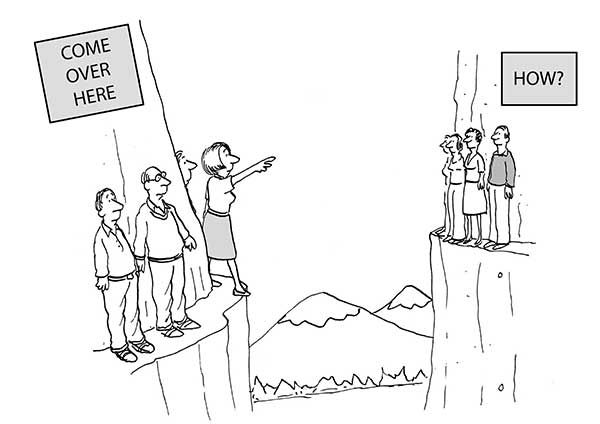Group Account Team Lead
Marketing or IT: Which department should be responsible for ecommerce?
Group Account Team Lead
Online business touches most if not ALL departments within an organization. It should belong to more than just the marketing or IT department. Organizations have a tendency to take a narrow view of digital, which can be a serious mistake. So just how involved should each department and supplier be in this business reality?
- Who should be responsible for the sales revenue generated by e-commerce?
- Should the transactional site be seen as an additional store, knowing that it also generates sales in brick and mortar stores?
- Who is in charge of the user experience?
- Who is in charge of keeping the in-store experience and the online experience consistent? #omnichannel
- Who is in charge of the operations linked to e-commerce?
The traditional marketing department
Organizations that have been around for a certain number of years had the tendency to delegate responsibility for online business to the marketing department. For many, online sales were negligible, and the website was often seen as a glorified media placement designed to showcase the brand and its products. Today, digital marketing channels generate measurable transactions that can be evaluated to calculate a return on investment. Even the concept of a media placement has been called into question. So organizations created sub-departments called “digital marketing” or “web marketing” within their marketing departments.
Marketing is mostly creative and intuitive, whereas digital marketing is more technical and measurable. These two realities are in direct opposition, but they need to cohabitate.

The IT department
Other organizations delegated responsibility for e-commerce to the IT department. The logic seems simple – a website is technology! However, a website without any users or content isn’t terribly useful.
The information technology department plays an essential role, but the ecosystem of e-commerce goes far beyond the technological aspect. It includes the entirety of remote transactions made through varying interfaces. Setting up or improving an e-commerce platform is one thing, but taking leadership and responsibility for the whole ecosystem is another. It’s even more important to think this through carefully if you are planning to redesign your website.
We’ve also seen that IT departments are often structured as service departments to respond to requests from other departments. Does this type of structure work for the realities of online business? An agile structure is definitely better adapted to excel in this context.
Let’s use a concrete and topical example #cybermonday
Let’s say that a retail brand with a transactional website and a storefront wanted to set up an exclusive promotion for its best customers for 24 hours only.
- The IT department would be involved to program the promotion on the platform, then monitor it.
- The marketing department would be responsible for spreading the word about the initiative on various channels.
- The purchasing department would need to forecast and maintain inventory.
- The operations department would need to manage the volume of orders received as well as the supply chain for delivering orders.
- There would be clients communicating with customer service (questions, problems, etc.) by phone and on Facebook.
- The organization would then want to measure and analyze the impact of the online promotion on the overall profitability of the organization. Operational costs, media costs, net margins and delivery costs would need to be taken into account.
Communication and synergy tend to be the key elements in projects like this. All the players need to be extremely agile and reactive, given that the promotion only lasts 24 hours.
Without an adapted structure, silos have a tendency to spring up. And an organization that works in silos has a hard time getting a transversal view of the customer, which is essential for the successful execution of a promotional activity like this one.
The organization is then confronted with a number of issues:
- Tension between departments or between the organization and its agency
- Operational inefficiency
- False promises to the customer
- Customer dissatisfaction
- …And ultimately, a significant loss of revenue

What is the miracle solution?
No miracles! There is no single solution, it’s really up to each organization to find the structure that works best for their particular business reality.
More and more often we are seeing companies hire a CDO (Chief Digital Officer) or a Director of Digital responsible for various teams of specialists like the product team, analytics/business intelligence, acquisition, editorial, etc. Some teams of specialists will be internalized; others will be outsourced to one or more agencies. To figure out which, some thinking is in order.
In the end, 4 things to remember:
- Stop thinking of digital in a silo!
- Prioritize a customer-first approach. Responsibilities related to e-commerce should include all points of contact with the customer, both online and in-store.
- Online business should be integrated at the organization’s highest levels of decision-making (vision, mission, strategic goals).
- An efficient organization must be agile enough to follow trends and innovate quickly.








